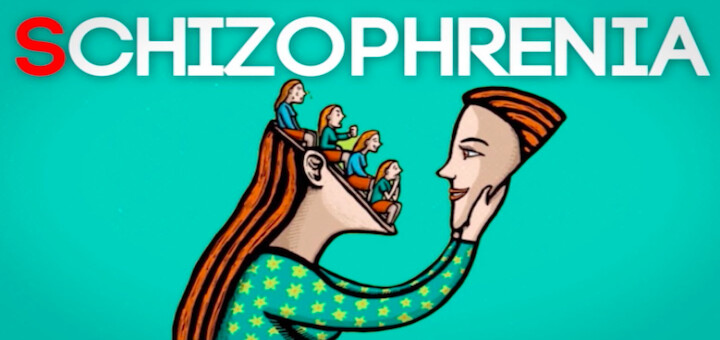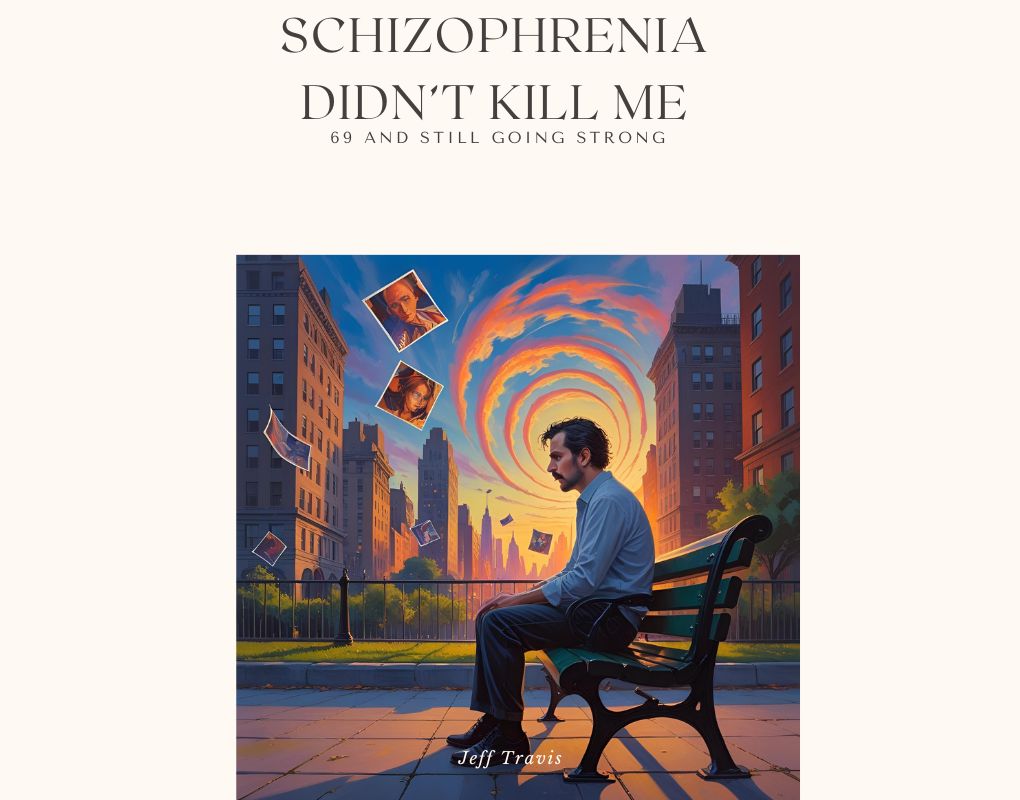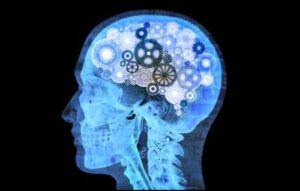Contents
- 1
- 1.1 Introduction: Why Understanding Schizophrenia Symptoms Matters
- 1.2 📌 Quick Facts:
- 1.3 Table of Contents
- 1.4 1. What Is Schizophrenia?
- 1.5 2. Core Categories of Schizophrenia Symptoms
- 1.6 3. Early Warning Signs: The Prodromal Phase
- 1.7 4. How Symptoms Change Over Time
- 1.8 5. Common Misconceptions About Schizophrenia
- 1.9 6. How Schizophrenia Is Diagnosed
- 1.10 7. When to Seek Help
- 1.11 8. Final Thoughts: Hope and Healing Are Possible
- 1.12 9. Frequently Asked Questions (FAQs)
- 1.13 Related Articles
- 1.14 “Schizophrenia Didn’t Kill Me”

Introduction: Why Understanding Schizophrenia Symptoms Matters
Schizophrenia is one of the most misunderstood mental health conditions today. It affects approximately 20 million people worldwide, according to the World Health Organization. It is a chronic brain disorder that significantly alters a person’s thought processes, perception of reality, emotions, and behavior. People with schizophrenia often struggle with everyday functioning, relationships, and maintaining employment or academic success.
Yet, with proper treatment and support, many people can and do recover or lead stable, fulfilling lives. The first step to recovery is awareness. Recognizing the signs and symptoms of schizophrenia early can lead to timely intervention and better long-term outcomes.
📌 Quick Facts:
- Schizophrenia typically emerges between ages 16 and 30.
- Both men and women are equally affected, although men may show symptoms earlier.
- The condition involves episodes of psychosis, along with persistent cognitive and emotional difficulties.
Table of Contents
- What Is Schizophrenia?
- Core Categories of Schizophrenia Symptoms
- Positive Symptoms
- Negative Symptoms
- Cognitive Symptoms
- Early Warning Signs
- How Symptoms Develop Over Time
- Common Misconceptions
- Diagnosis & Medical Evaluation
- When and How to Seek Help
- Final Thoughts
- FAQs
1. What Is Schizophrenia?
Schizophrenia is a neuropsychiatric disorder characterized by disruptions in thought, perception, emotion, and behavior. The name originates from the Greek words “schizo” (split) and “phren” (mind), which reflects the fragmentation of mental functions rather than a split personality, as often mistakenly believed.
It’s classified as a psychotic disorder—a group of mental health conditions where the individual loses touch with reality.
🧠 What causes schizophrenia?
While the exact cause is unknown, research suggests a combination of:
- Genetic vulnerability
- Neurochemical imbalances, particularly dopamine and glutamate
- Structural brain abnormalities
- Environmental triggers, such as prenatal complications, trauma, or drug use
2. Core Categories of Schizophrenia Symptoms
Schizophrenia symptoms are typically divided into three major categories: positive, negative, and cognitive symptoms. Each type affects different aspects of functioning and may vary in severity from person to person.
A. Positive Symptoms
Positive doesn’t mean “good” here—it refers to excess or distortion of normal functions.
🔊 1. Hallucinations
Hallucinations are sensory experiences without external stimuli. People perceive things that aren’t actually present, often in the form of:
- Auditory hallucinations – hearing voices or sounds (most common)
- Visual hallucinations – seeing things or people who aren’t there
- Olfactory hallucinations – smelling odors no one else can detect
- Tactile hallucinations – feeling touch or movement on the body
Real-World Example:
A person might hear a voice commanding them to act or criticizing them persistently. This voice feels as real as another person speaking.
SEO Keywords: auditory hallucinations in schizophrenia, visual hallucinations, schizophrenia sensory symptoms
🧠 2. Delusions
Delusions are deeply held false beliefs, even when evidence disproves them. These are often bizarre or irrational and can disrupt a person’s entire worldview.
Types of Delusions:
- Paranoid or persecutory delusions: Believing someone is out to harm or surveil them.
- Grandiose delusions: Believing they have extraordinary powers, wealth, or fame.
- Referential delusions: Believing random events (TV shows, newspaper headlines) are directed at them.
SEO Keywords: schizophrenia delusions, paranoid delusions, grandiosity in schizophrenia
🧩 3. Disorganized Thinking and Speech
Disorganized thought is often revealed through incoherent or tangential speech.
Symptoms include:
- Loose associations: Jumping from one topic to another.
- Clang associations: Speaking in rhymes with no logical connections.
- Neologisms: Creating made-up words.
- Word salad: Completely incoherent and jumbled sentences.
Example:
“The train brain rain stain—can’t explain pain. Fire with desire—higher wire.”
SEO Keywords: disorganized speech, thought disorder schizophrenia, speech patterns in psychosis
🚶 4. Grossly Disorganized or Catatonic Behavior
This includes:
- Agitation, pacing, unpredictable movements
- Repetitive gestures with no purpose
- Catatonia: complete lack of response or motor activity, sometimes mimicking people (echopraxia)
B. Negative Symptoms
These involve the loss or reduction of normal emotional and behavioral functions, and they often persist after psychotic episodes subside.
😐 1. Flat Affect (Affective Flattening)
- Diminished emotional expression
- Monotone speech
- Blank facial expressions
🧍♂️ 2. Avolition
- Lack of motivation to begin or sustain tasks
- Neglect of personal hygiene or work duties
💬 3. Alogia
- Minimal speech output
- Trouble finding words or initiating conversation
🎭 4. Anhedonia
- Inability to feel pleasure from enjoyable activities
🚪 5. Social Withdrawal
- Avoidance of relationships or social situations
- Preference for isolation
SEO Keywords: negative symptoms of schizophrenia, emotional flatness, avolition, social withdrawal
C. Cognitive Symptoms
These affect mental processing and can interfere with memory, attention, and problem-solving.
🧠 1. Impaired Executive Functioning
- Difficulty planning or organizing thoughts
- Struggles with decision-making
🔄 2. Working Memory Problems
- Can’t hold onto information for short tasks (e.g., remembering instructions)
🎯 3. Poor Attention Span
- Easily distracted, difficulty focusing or following conversations
Cognitive symptoms often contribute to functional disability—even more than positive symptoms.
SEO Keywords: cognitive impairment in schizophrenia, working memory deficits, schizophrenia and attention
3. Early Warning Signs: The Prodromal Phase
Before full-blown psychosis appears, individuals may experience subtle changes during the prodromal stage, which can last weeks, months, or even years.
⚠️ Common Early Symptoms:
- Gradual withdrawal from social life
- Suspicion or irrational thinking
- Poor academic or work performance
- Unusual emotions or flatness
- Changes in sleep, appetite, or self-care
- Increased sensitivity to noise or light
SEO Keywords: early symptoms of schizophrenia, prodromal phase, schizophrenia onset signs
4. How Symptoms Change Over Time
Schizophrenia doesn’t remain constant. Symptoms typically follow a cyclical pattern:
- Prodromal phase – early subtle signs
- Acute (active) phase – intense psychosis, hallucinations, and delusions
- Residual phase – after the acute episode, negative and cognitive symptoms may persist
Without treatment, symptoms can worsen. With support, many individuals experience long periods of stability or remission.
5. Common Misconceptions About Schizophrenia
❌ Myth: People with schizophrenia are dangerous.
Truth: Most people with schizophrenia are not violent and are more likely to be victims of violence.
❌ Myth: Schizophrenia means a split personality.
Truth: Schizophrenia involves a split from reality, not multiple personalities (which is a different condition called dissociative identity disorder).
❌ Myth: Schizophrenia can’t be treated.
Truth: Schizophrenia is highly treatable with medications, therapy, and social support.
6. How Schizophrenia Is Diagnosed
Diagnosis requires a comprehensive psychiatric assessment by a licensed professional using the DSM-5 criteria. To meet the criteria:
- Two or more symptoms must be present for at least 1 month (one must be delusions, hallucinations, or disorganized speech).
- Signs of disturbance must last at least 6 months.
- Symptoms cause significant impairment in daily functioning.
- Other conditions (bipolar, drug use, neurological issues) must be ruled out.
🧪 Diagnostic Tools:
- Psychiatric interviews
- Family history
- Brain imaging (to rule out tumors or injuries)
- Blood tests (to rule out other illnesses)
7. When to Seek Help
Early intervention significantly improves outcomes. Do not delay seeking help if you or a loved one is showing any of the following:
- Persistent hallucinations or delusions
- Severe social withdrawal or emotional flatness
- Disorganized behavior or speech
- Signs of self-harm or suicidal thoughts
- Difficulty completing basic tasks
📞 In Crisis? Contact a crisis hotline or visit an emergency room immediately.
SEO Keywords: when to get help for schizophrenia, early psychosis intervention, mental health crisis support
8. Final Thoughts: Hope and Healing Are Possible
Schizophrenia is a serious but manageable condition. While the journey may be challenging, thousands of people with schizophrenia lead independent, successful lives. Treatment often includes:
- Antipsychotic medications
- Cognitive-behavioral therapy (CBT)
- Peer and family support
- Occupational rehabilitation
- Community integration
Awareness, education, and empathy reduce stigma and improve outcomes for everyone.
9. Frequently Asked Questions (FAQs)
❓ What triggers schizophrenia?
A mix of genetic predisposition and environmental stressors, including trauma, social isolation, and substance abuse.
❓ Can people with schizophrenia live normal lives?
Yes. With treatment and support, many individuals recover or manage their condition well.
❓ Is schizophrenia hereditary?
It runs in families, but genes alone don’t determine who will develop it. Environment plays a crucial role.
❓ How is schizophrenia treated?
- Medication: Antipsychotics reduce hallucinations/delusions.
- Therapy: Helps manage negative and cognitive symptoms.
- Lifestyle: Nutrition, exercise, and sleep make a big difference.
Related Articles
“Schizophrenia Didn’t Kill Me”
Schizophrenia Didn’t Kill Me is a raw, unfiltered journey through madness, misdiagnosis, and survival — told by a man who lived it and lived to write the truth. From locked wards and medication fog to moments of clarity and breakthrough, Jeff Travis shares his decades-long battle with schizophrenia in a voice that’s equal parts brutal, insightful, and unexpectedly hopeful. This isn’t a tale of victimhood — it’s a story of grit, reinvention, and reclaiming a life that the system tried to write off. If you’ve ever struggled with mental illness — or love someone who has — this book will crack you open and leave you stronger.







